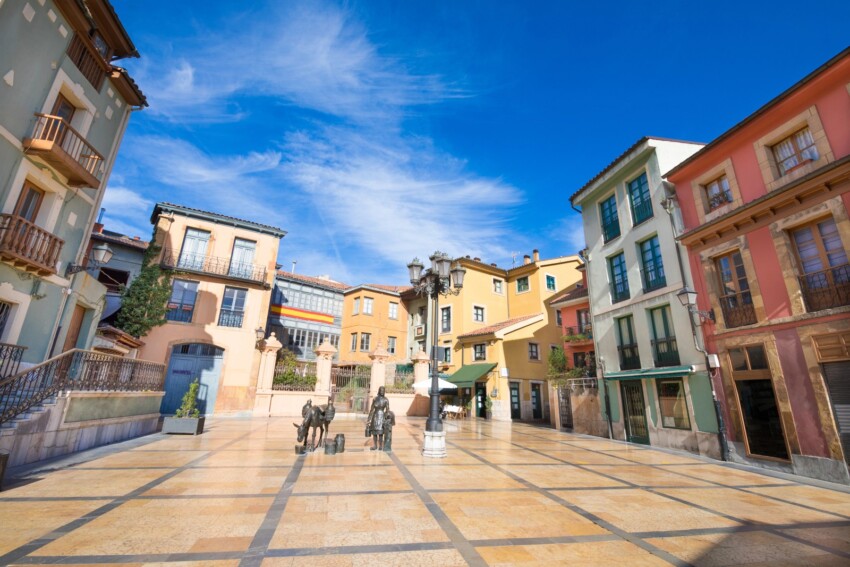

Oviedo is the fascinating capital of Asturias, a region in Northern Spain often snubbed by tourists. They really don’t know what they are missing: the entire region is a gem to be discovered, rich in cultural and scenic beauty, with mountains that even exceed two thousand metres!
Oviedo is the spiritual heart of the region because of its key role in the establishment of the Camino de Santiago: the Primitive Way, the first Jacobean itinerary of which information is available, starts here. It is a walking route of over 300 km that follows the route followed by King Alfonso II in the 9th century to reach the tomb of the apostle Santiago, which was discovered during his reign.
Before setting off to Santiago, or driving to other destinations in northern Spain, stop and visit this lively city where pre-Romanesque buildings and modern open-air sculptures, historic quarters and bustling shopping areas happily coexist.
When it’s time for a break, seek out one of the city’s legendary chigres (cider houses), where you can witness the magical, if somewhat bizarre, ritual of pouring cider, the quintessential Asturian drink.
The centre of Oviedo is easy to get around on foot, thanks to its small size and numerous pedestrian streets. As you stroll through the city, you will come across elegant 19th-century palaces, churches and pre-Romanesque buildings, lively markets and contemporary works of art and architecture: it’s a fascinating mix, to be explored at your own pace.
Here are the must-see attractions in Oviedo.
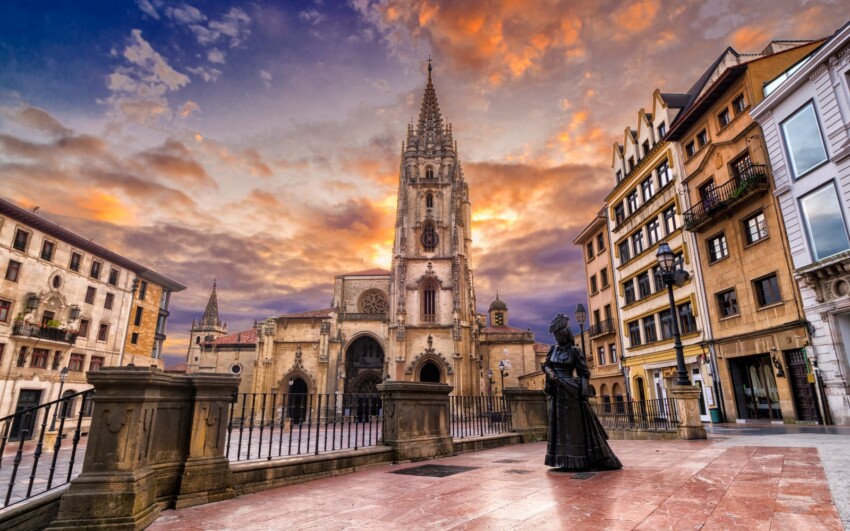
The Cathedral of Oviedo, with its splendid Gothic tower, is the city’s symbolic monument. It is a religious building with a history stretching back thousands of years and played a primary role in Spanish Christianity during the Middle Ages.
The original core of the church is the Cámara Santa, a pre-Romanesque chapel built in the 9th century by Alfonso II to house important religious relics; new Gothic and Baroque buildings were added between the 12th and 18th centuries.
The entrance is through the main church, a magnificent building with numerous small chapels; as you proceed down the main aisle your gaze will be magnetically captured by the splendid 16th-century wooden altar.
During your visit to the Cathedral you can admire fine sculptures, the tombs of Asturian kings, the cloister, and two artefacts that have become symbols of the city and the region, namely the Cross of Angels and the Cross of Victory.
Among the Cathedral’s treasures of deep religious significance are the Holy Shroud, the sheet that would have covered the face of the dead Christ, and a piece of lígnum crucis, the wood of Jesus’ cross.
It is impossible to ascertain whether these objects are actually what they claim to be, but their suggestion, even for non-Catholics, is undoubtedly very strong.
The Cathedral Museum on the upper floor exhibits an interesting collection of sculptures and sacred art objects.
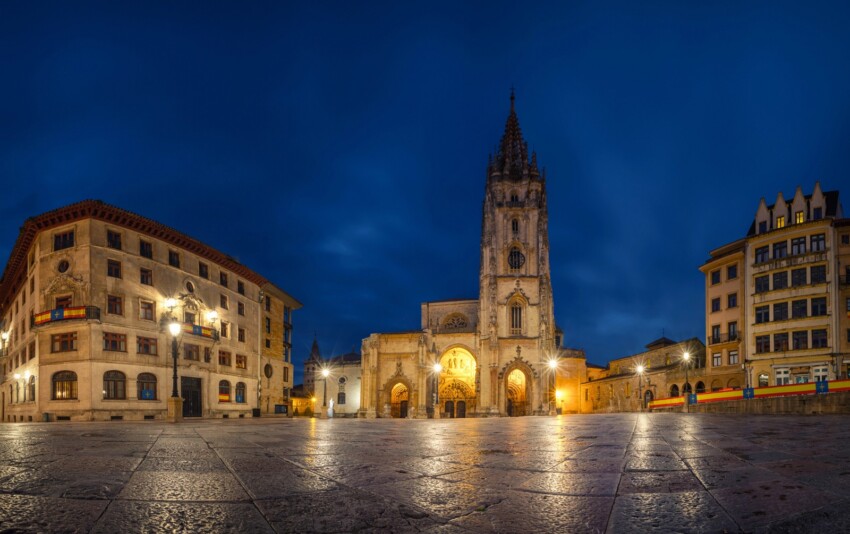
The historical centre of Oviedo is a maze of clean pedestrian streets that invite you to stroll. The area around the Cathedral Square is full of noble palaces, medieval churches and cosy squares. The Plaza del Fontán, with its characteristic 19th-century market, is the heart of traditional commercial life. Shopping streets such as Calle Uría alternate with picturesque medieval streets where you can find the famous cider houses, the traditional places where you can taste Asturian cider poured in the characteristic ‘de escanciado’ way.
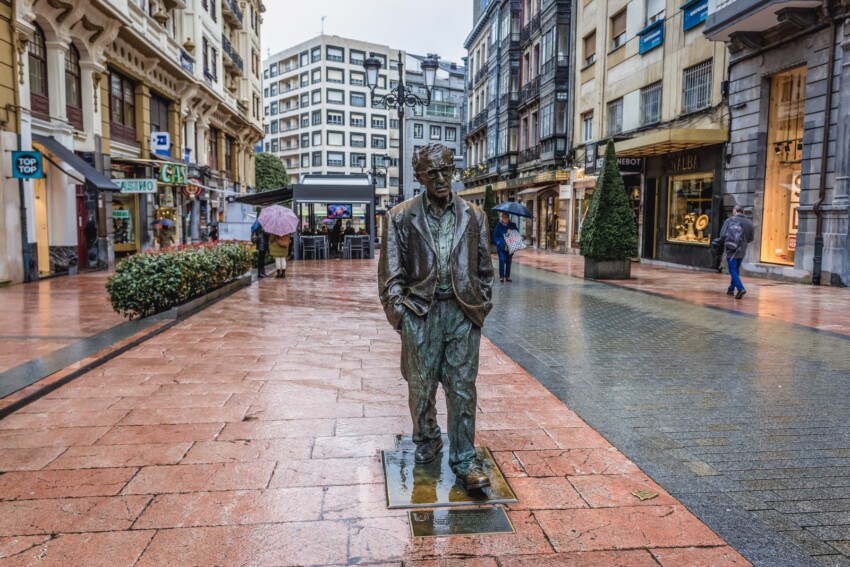
A peculiar feature of Oviedo, which intrigues all tourists, is the quantity of statues scattered in the pedestrian streets and squares of the historical centre. There are more than 100 of them, almost all in bronze, varying in size and subject matter.
Explore the centre in search of the three most curious statues in Oviedo:
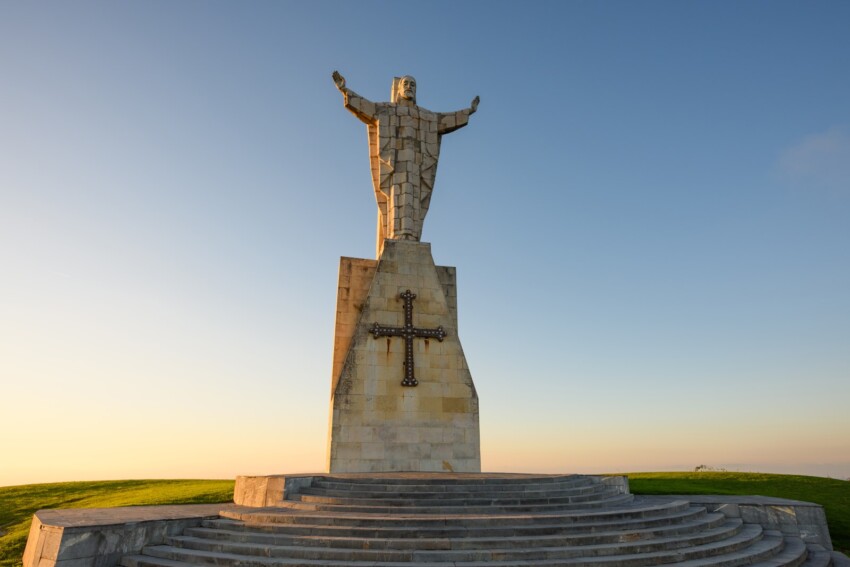
About 7 km northwest of the city centre is Oviedo’s most impressive statue, the Monument to the Sagrado Corazón, a gigantic statue of Christ that appears to bless the city from the top of Monte Naranco. The statue is 30 metres high and was built in 1981.
The view from Monte Naranco is spectacular: you can see the city of Oviedo, with its historic buildings, squeezed between the snow-capped mountains and glimpse the Bay of Biscay in the background.
If you have come this far, add a visit to the Palacio de Santa Maria del Naranco, built on the slopes of the mountain, to your programme. It is an interesting example of pre-Romanesque architecture, with some innovative features for the time such as the sogueado, a rope motif used for the sculptural decoration of the columns.
It can only be visited on a guided tour that also includes the church of San Miguel de Lillo.
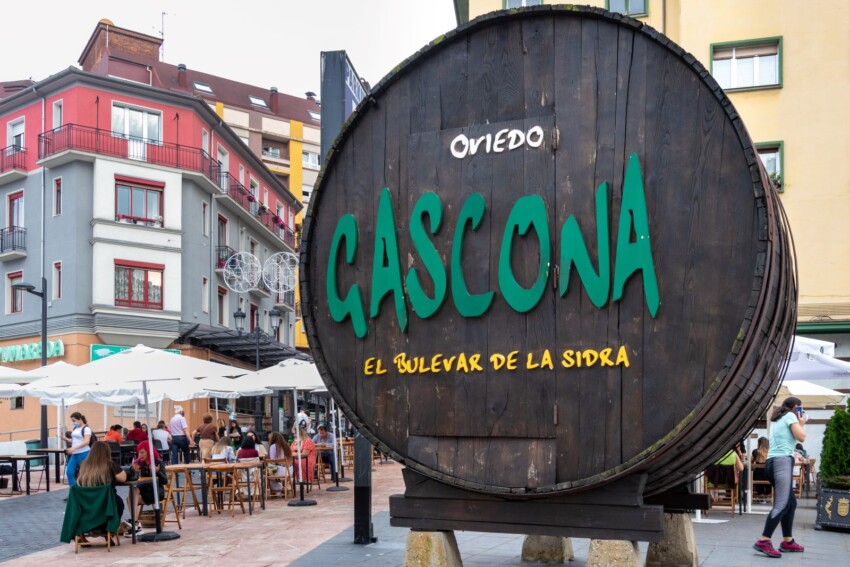
Cider is the Asturian ‘wine’ par excellence, much loved by the locals. This fermented apple juice, with low alcohol content, is a refreshing and very pleasant drink, made only with local fruit and suitable to accompany many dishes.
Asturian cider is served by a special method that has its own precise function (to release carbon dioxide) but is an exciting folkloric spectacle for tourists.
It is therefore a must during a holiday in Oviedo to visit the Boulevar de la Sidra, whose official name is Calle Gascona. It is a street full of cider houses and traditional bars, where you can enjoy the appetising dishes of Asturian cuisine washed down with a glass of good cider.
Here you will witness the traditional ritual of ‘descanciar‘, or the pouring of cider, which is done as follows: with one hand you hold a wide glass down and with the other, held high above your head, you drop the cider into the glass.
The impact created between the liquid and the glass causes the carbon dioxide to be released and the cider develops freshness, aromas and flavours. Drink it quickly, as the Asturians do, before the aromas evaporate.
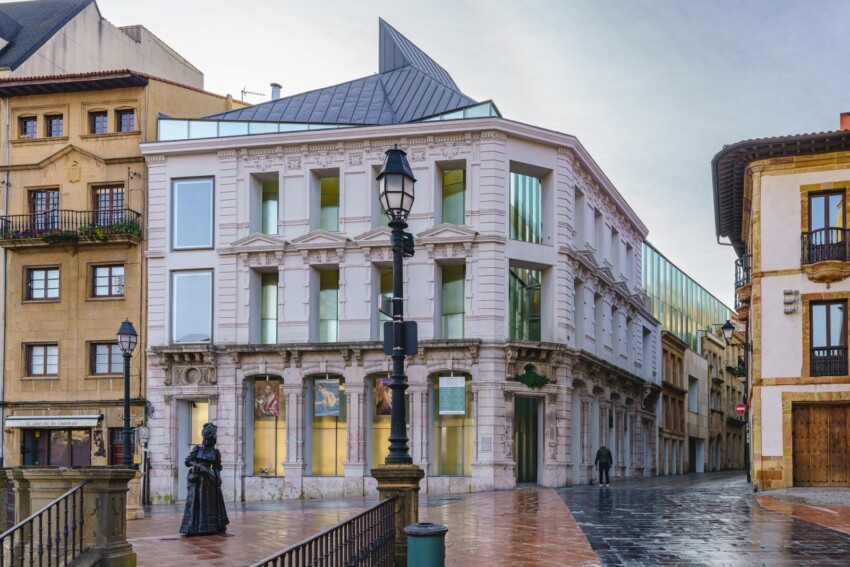
If you are an art lover, visit Museum of Fine Arts of Asturias8, which has two exhibition venues housed in elegant buildings plus a very modern one added in 2015.
The collection includes works by great Spanish and European artists of the past and present, including Goya, Titian, El Greco, Brueghel the Elder, Picasso, Miró and Dalí.
If you want to learn more about the history of the region, the museum for you is Archaeological Museum of Asturias9, housed in a recently restored 16th-century monastery.
In the following map you can see the location of the main places of interest mentioned in this article.
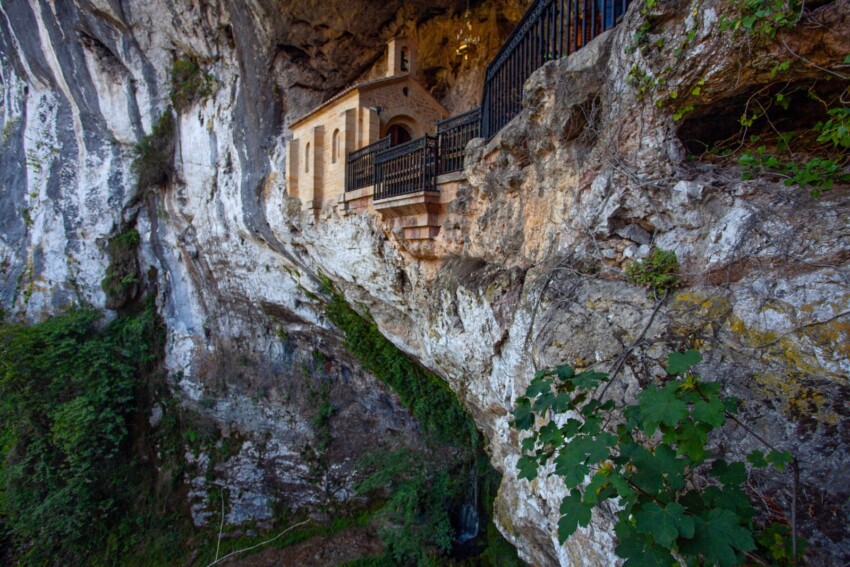
Asturias offers endless possibilities for day trips from Oviedo. Renting a car is recommended to best explore the region and reach the most attractive locations.
The Sanctuary of Covadonga and the surrounding mountain lakes represent one of the most popular excursions from Asturias. About an hour and a half from Oviedo, this sacred place for Asturians is located at the entrance to the Picos de Europa National Park. The neo-Gothic basilica, holy cave and highland glacial lakes offer an unforgettable experience between history and nature.
The coastal city of Gijón, only 30 km from Oviedo, offers a perfect contrast to the capital. With its urban beaches, the quaint fishing district of Cimadevilla and dynamic waterfront, it is a great destination for a day at the beach.
In addition to the monuments of Oviedo, the pre-Romanesque churches around the city are worth a dedicated excursion. San Julián de los Prados, with its unique frescoes, and Santa Cristina de Lena are magnificent examples of this unique architectural style.
Oviedo is not yet on the beaten tourist track in northern Spain but still has a good choice of hotels and B&Bs, making it fairly easy to find quality accommodation all year round. Prices are good compared to the Spanish average.
The historical centre offers the best location for exploring the city, with boutique hotels in historic buildings. The proximity to the Cathedral and the main attractions makes this area particularly convenient for tourists. The area of Calle Uría and its surroundings is ideal for those seeking modern hotels in a central location, with easy access to shopping and public transport.
Oviedo Airport, also known as Asturias Airport, is connected by low-cost flights, mainly operated by Ryanair and Volotea. If you do not find a good connecting flight schedule, you will have to fly to another Spanish location, such as Madrid or Santander, and from there reach Oviedo by public transport or a rented car.
There are direct trains from many Spanish cities, such as Madrid, Barcelona and Alicante, as well as of course all the main towns in Asturias. However, we recommend renting a car, so you have more freedom of movement and can enjoy the beautiful landscapes of Asturias.
From Madrid you can reach Oviedo in 4½ hours by taking the A-6 motorway.
What's the weather at Oviedo? Below are the temperatures and the weather forecast at Oviedo for the next few days.